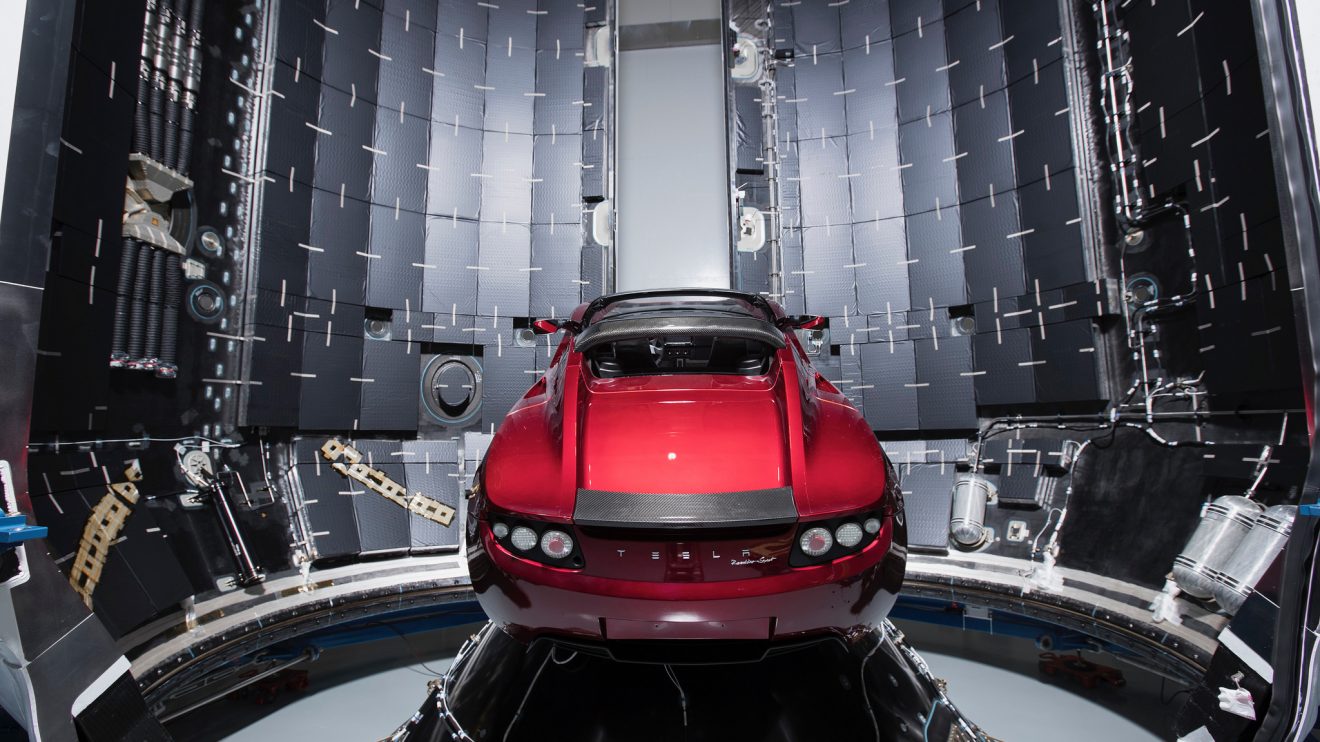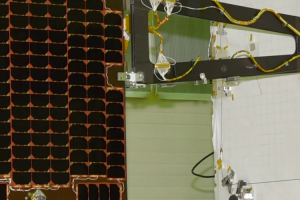SpaceX, the rocket company started by billionaire Elon Musk, successfully attempted to launch the first-ever Falcon Heavy rocket on February 6 from Launch Complex 39A in Florida. The Falcon Heavy rocket is made up of three of the rockets used in their smaller Falcon 9 rocket. The Falcon Heavy is now the world’s most powerful current rocket and signals a new evolution in the 16-year-old company. The rocket lifted off the launch pad at 3:45 p.m. ET.
Falcon Heavy side cores have landed at SpaceX’s Landing Zones 1 and 2. pic.twitter.com/oMBqizqnpI
— SpaceX (@SpaceX) February 6, 2018
Musk announced plans to build the Falcon Heavy rocket in 2011, and originally estimated the first test flight might be made by 2013. Various issues including two failed Falcon 9 rocket launches and resource changes as well as underestimating the complexity of the rocket delayed completion until 2017.
The launchpad the rocket is set to take off from, Launch Complex 39A, was previously used by NASA to send astronauts on the Saturn V rocket to the moon, including aboard Apollo 11.
The two side boosters on the rocket successfully landed back at Cape Canaveral, although the status of the center booster, which was to land on a barge in the Atlantic ocean, is undetermined.
The Falcon Heavy is the most powerful rocket which currently exists, but not in history. SpaceX says the total combined thrust of the three boosters which make up the first stage is 5.5 million pounds of force, whereas the next-most powerful first stage on the Delta IV Heavy operated by United Launch Alliance is 2.2 million pounds of force. Each booster on the Falcon Heavy has 9 Merlin engines, totaling 27 for the entire rocket.
“When Falcon Heavy lifts off, it will be the most powerful operational rocket in the world by a factor of two, with the ability to lift more than twice the payload of the next vehicle, at one-third the cost. Only the Saturn V moon rocket, last flown in 1973, delivered more payload to orbit.”
As a test payload, the rocket is carrying Musk’s personal Tesla Roadster instead of a satellite. SpaceX hopes the rocket will launch and inject the Roadster into a trans-Mars injection orbit, meaning that the vehicle would orbit the Sun in a similar orbit to the one taken by Mars. The car will not actually be heading to the red planet or attempting to land on it.
The world’s most powerful rocket ever was the Saturn V rocket, which launched American astronauts into space to missions around the moon. The rocket produced 7.9 million pounds of force at launch from its five F-1 engines.
The Russian N1 rocket, designed to be a competitor to the Saturn V, produced 10.2 million pounds of thrust at liftoff, but never had a successful launch. It would keep the record of most-powerful rocket to this day if it had. Four launches of the rocket in the late 1960’s/early 1970’s took place, all of which ended in failure to reach orbit. A fifth scheduled launch never took place, as the rocket program was canceled in 1974.
Cheaper access to space
SpaceX advertises that a Falcon Heavy launch can be bought for as cheap as $90 million to carry up to 63,800 kilograms into space (Low Earth Orbit). The average cost of a Delta IV Heavy rocket is $400 million, although the two rockets have some differing capabilities.
SpaceX is expecting that their reuse of rocket boosters will allow them to launch more rockets without having to spend as much to build boosters, allowing them to charge less for each launch. The extra lift capacity of the Falcon Heavy rocket is especially useful for heavy communication satellites which typically can only launch on larger rockets like the European Ariane 5.
The two side boosters of the Falcon Heavy demo launch were used in two previous launches. SpaceX says one previously launched the Thaicom 8 satellite in May 2016, and the other launched the NASA CRS-9 mission in July of 2016.
Return to land and of large launches
The three boosters of the Falcon Heavy rocket are expected to return back to Cape Canaveral where the launch is taking place. The two side boosters are expected to return to land at the two Landing Zones which SpaceX has built near the launch pad. The center booster is expected to land on a SpaceX barge in the Atlantic ocean.
The entire rocket was first test-fired on January 24, the first time that all 27 engines were tested together as a single rocket.
The Cape Canaveral area is expecting thousands of visitors for the rocket launch, which would be the space complex’s largest since the Space Shuttle launches which ended in 2011. The NASA Kennedy Space Center visitor complex sold out of all tickets for Tuesday, including the most expensive $195 tickets allowing visitors to watch launches from the Apollo/Saturn launch complex. The visitor complex is closed to the public for this launch.



